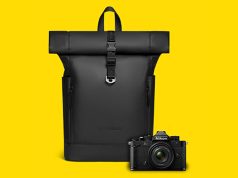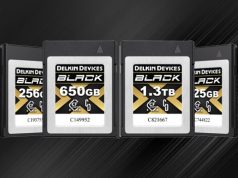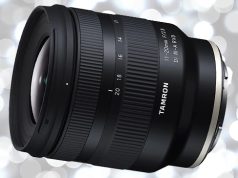Entry Level Handsets at CTIA: Cheap Never Looked So Good
It’s a little hard to pay attention to phones that cost less than $50 when this year’s CTIA show floor abounds with $400 handsets sporting touch-panel flashiness and GPS capability. But dealers can do well to give the lower price points a little spotlight. “Entry level phones are still a big segment of the market,” says UT Starcom’s Joan Cear. “And the good news is they’re not big and clunky anymore.”
Indeed, the entry level phones coming out in 2007 look as slim, sleek and soft-edged as their high-priced design influences. UT Starcom is introducing the CDM 7026 and the CDM 7076, inexpensive options that still carry Bluetooth capability and basic cameras. UT Starcom’s had a lot of success this year with a handset nicknamed “the easy phone,” the PN300, carried by Verizon. “It doesn’t even have a camera, but the buttons are big and there’s an easy-to-read screen,” says Cear, who adds that simple phones are popular with seniors.
Sony Ericsson’s hot new entry-level handset is the silver and black Z550, due out in Q2 and expected to retail for under $30. “It’s got sophisticated lines,” says Sony Ericsson’s Stephen Sneeden. “It’s for people who want to look good, but don’t want to spend a lot of money doing it. This doesn’t look bad at all sitting on a table in a meeting.”
Kodak’s Cam Phone Solution
Kodak has launched a one-touch solution for uploading camera phone photos to the Web. “Kodak Mobile Link,” powered by Exclaim’s Pictavision platform, allows users access to the Kodak Gallery at www.kodakgallery.com at the press of a handset button. On the Web site, to which 2 billion photos have been uploaded so far, users can upload, download and share mobile-phone captured photos and video. This is a more streamlined uploading alternative to attaching photos to MMS messages.
Users can also employ their handset to create a Kodak Gallery account if they don’t already have one. The Kodak Mobile Link software is available for download from participating wireless carriers directly to a user’s phone. Subscriptions start at $3.99 per month. The Kodak Mobile Link process eliminates the need to attach photos to e-mails, “turning your phone into a virtual photo album,” according to a Web site demo available at
www.pictavision.com/pv_demo.html.
Speed Thrills: Sprint Greenlights Mobile WiMAX
Ever get annoyed by having to sign up and pay those $7 fees in airports or coffee shops for wireless Internet access for your computer? Currently, the solution is a PC card that’ll let you surf anywhere you get cell phone coverage (with a carrier subscription, of course), but not always at acceptable speeds. Next year, Sprint will offer another choice, a much-heralded WiMAX network that will allow not only laptops but all sorts of mobile devices to have super-fast internet access anywhere in the WiMAX coverage footprint.
That footprint will span over Chicago, Baltimore and Washington, D.C. by the end of this year, with 12 additional markets coming on board in April of 2008. Sprint plans to spend literally billions of dollars ($3 billion at last count) making the hardware and system adjustments to its towers and infrastructure to enable the WiMAX service.
“Initial access devices will be PC’s and modems,” says Sprint spokesman John Polivka. “But in the WiMAX world, any number of other devices are possible: cameras, videocams, personal media players, Internet tablets. All these allow wireless capability and can talk to each other. Imagine having a digital camera where you snap a photograph and send it to your TV or PC wirelessly anywhere in the footprint.”
Polivka says manufacturers including Samsung, Nokia, Motorola and Intel are developing WiMAX devices for the U.S. market launch. (See photo: a possible device from Samsung, a WiMAX-enabled ultra mobile PC that’s currently on the commercial market in Korea.)
Americans in Washington, D.C. and Raleigh-Durham, NC, had a chance to try WiMAX in Sprint trials over the last two years. Customer interest was such that Sprint put the green light on the project. “People resisted giving up their service at the end of the trial!” says Polivka.
Cameras, from the low-cost VGA to the now-standard 1.3 megapixel models, seemed almost a second thought in the new handsets featured at this year’s CTIA Wireless conference…taking a back seat to advanced GPS features and iPhone-inspired touch screens. The big news in mobile photography was mostly about in-camera editing software that allows you to crop and remove red-eye from shots before beaming them directly to your blog or to a friend. Still, one premium camera phone stood out: Sony Ericsson’s K810 Cyber-shot, a 3.2 megapixel candybar that has so many point-and-shoot features, it’s virtually indistinguishable from a camera on its backside. The black and silver handset, expected out later this year, will likely sell for over $500, and for highbrow reasons: it sports a Xenon flash with red-eye reduction, a self-timer, photo editing software, Picture blogging features, and autofocus. It’s shiny, diamondy circular number buttons are swanky too. Those buttons have a dual purpose. Number 7, for example, is a shortcut for a timer when the phone is in camera mode. Another button activates “macro.” Sony Ericsson debuted other more affordable Cyber-shot phones, like the $299 K550 2-megapixel unit, but the K810 was such a progressive product for them, they actually created a tripod accessory for it, the tiny IPK 100, which they say will cost well under $50.





